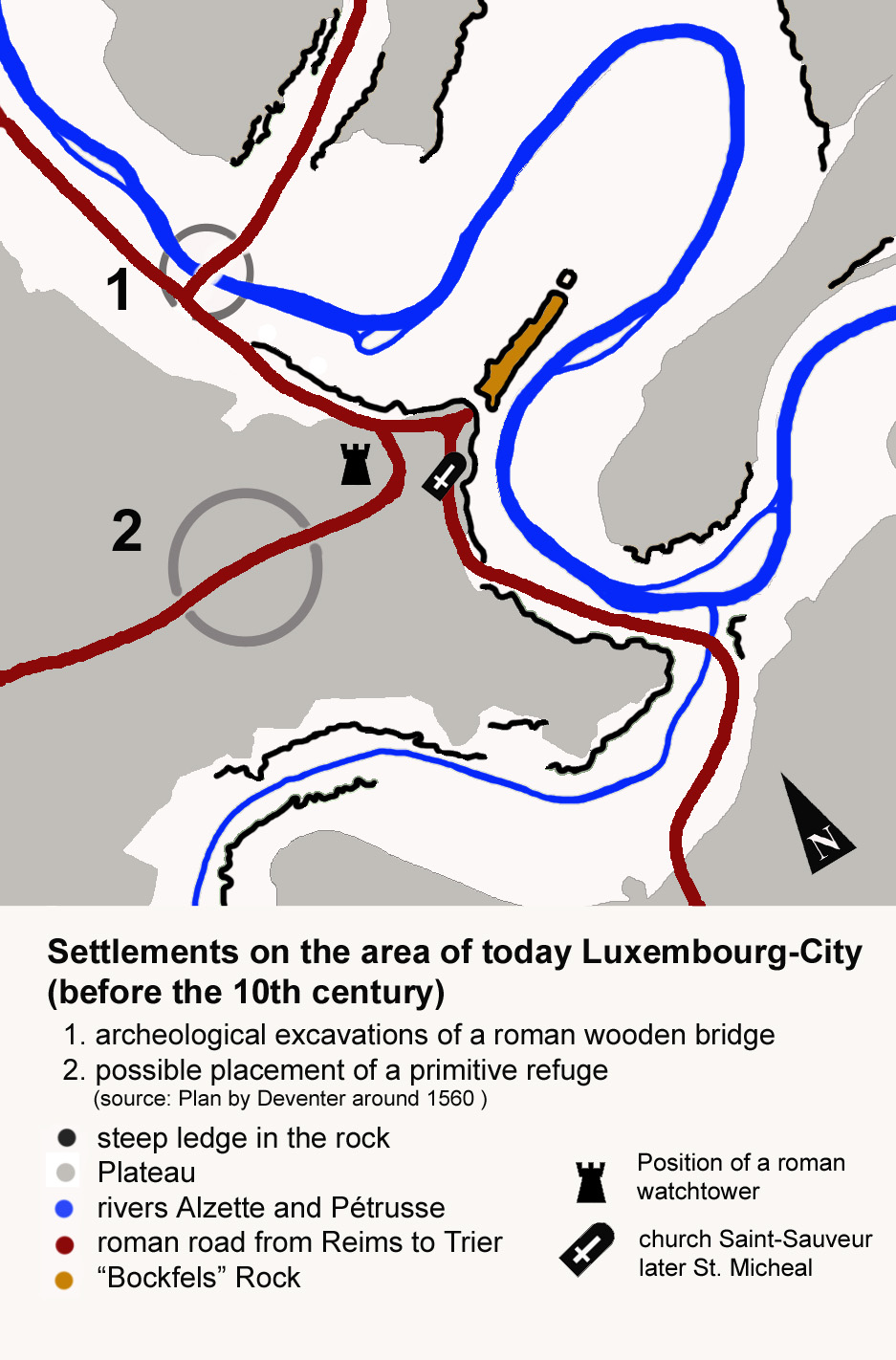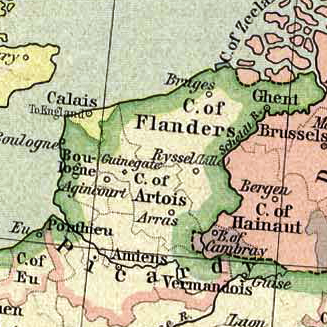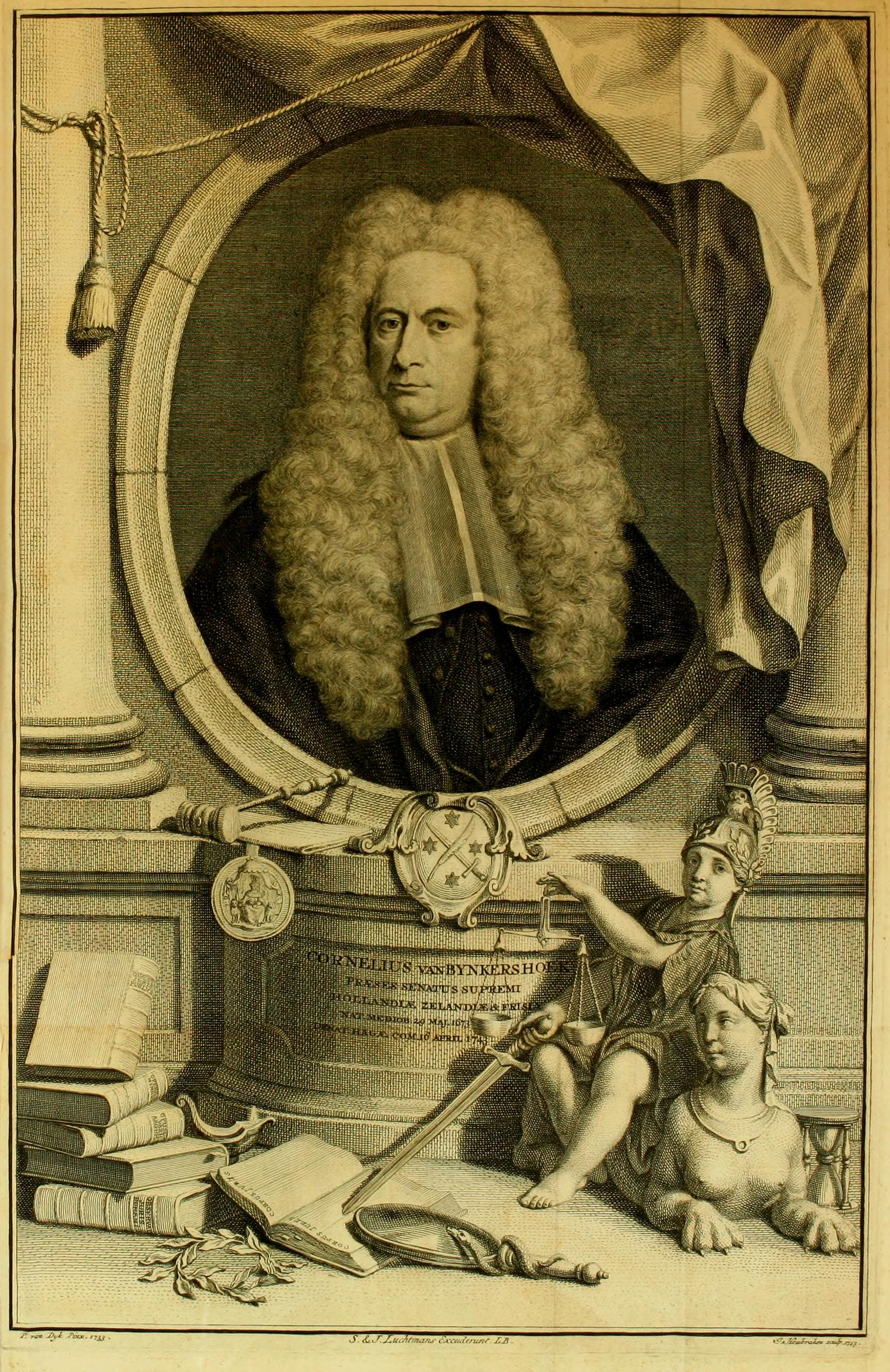|
Great Council Of Mechelen
From the 15th century onwards, the Great Council of the Netherlands at Mechelen (Dutch: ; French: ; German: ) was the highest court in the Burgundian Netherlands. It was responsible for the Dutch-, French- and German-speaking areas. In Luxembourgish the phrase "" (we'll go to Mechelen) still means playing one's last trump card. The Grote Raad first sat in the Schepenhuis in Mechelen then, from 1616, in the (old) palace of Margaretha of Austria on Keizerstraat. Origins and history The medieval rulers were assisted by advisers. Together with the ruler they formed the Council of State, also called the ''consilium'' or ''curia''. Gradually the council became more specialised, with separate financial, judicial and political council emerging. In the Burgundian Netherlands, the councils initially travelled with the Duke. In 1473 Duke Charles the Bold decided to establish the council in a specific location, in Mechelen. The council took on the name of the Parliament of Mechelen. After ... [...More Info...] [...Related Items...] OR: [Wikipedia] [Google] [Baidu] |
Schepenhuis, Mechelen
The (Aldermen's House) of Mechelen, Flemish Brabant, Belgium, is a building where the city's aldermen held their meetings in the Middle Ages. It is located on the edge of the Grote Markt (main square), between the latter and the IJzerenleen and is considered the first stone 'town hall' of Flanders. History Early history In the 13th century, Mechelen experienced an economic revival due to the flourishing cloth trade. As a result, the need for buildings grew. In 1288 it was decided to erect a stone building for the aldermen's bench, which until then met in the open air. The building was expanded between 1374 and 1375. The decoration was done by André Beauneveu and Jan van Mansdale, among others. The interior includes a remarkable archive room on the ground floor. Previously called ''Vierschaere'', it has a remarkable oak ceiling. In the interior there are 12 sculpted ''balkzolen'' created between 1375 and 1378 by Herman Van Blankene and Jan van Lokeren. The original furni ... [...More Info...] [...Related Items...] OR: [Wikipedia] [Google] [Baidu] |
Overijssel
Overijssel (; ; ; ) is a Provinces of the Netherlands, province of the Netherlands located in the eastern part of the country. The province's name comes from the perspective of the Prince-Bishopric of Utrecht, Episcopal principality of Utrecht, which held the territory until 1528. The capital city of Overijssel is Zwolle (pop. 132,441) and the largest city is Enschede (pop. 161,235). The province had a population of about 1,184,000 as of January 2023. The land mostly consists of grasslands and some forests (including Sallandse Heuvelrug National Park); it also borders a small part of the IJsselmeer to the west. Geography Overijssel is bordered by Germany (Lower Saxony and North Rhine-Westphalia) to the east, the Achterhoek region of Gelderland to the south, the Veluwe region of Gelderland and Flevoland to the west, and Friesland and the former moors of Drenthe to the north. Overijssel comprises three regions: Kop van Overijssel in the northwest, Salland in the centre of the pro ... [...More Info...] [...Related Items...] OR: [Wikipedia] [Google] [Baidu] |
Duchy Of Luxembourg
The Duchy of Luxembourg (; ; ; ) was a Imperial state, state of the Holy Roman Empire, the ancestral homeland of the noble House of Luxembourg. The House of Luxembourg became one of the most important political forces in the 14th century, competing against the House of Habsburg for supremacy in Central Europe. They would be the heirs to the Přemyslid dynasty in the Kingdom of Bohemia, succeeding to the Kingdom of Hungary and contributing four Holy Roman Emperors until their own line of male heirs came to an end and the House of Habsburg received the territories that the two Houses had originally agreed upon in the Treaty of Brünn in 1364. In 1443, the duchy passed to Duke Philip the Good of Burgundy of the French House of Valois-Burgundy, House of Valois, and, in 1477, by marriage to Archduke Maximilian I of Austria of the House of Habsburg. The Seventeen Provinces of the former Burgundian Netherlands were formed into an integral union by Charles V, Holy Roman Emperor in the ... [...More Info...] [...Related Items...] OR: [Wikipedia] [Google] [Baidu] |
County Of Hainaut
The County of Hainaut ( ; ; ; ), sometimes spelled Hainault, was a territorial lordship within the medieval Holy Roman Empire that straddled the present-day border of Belgium and France. Its most important towns included Mons, Belgium, Mons (), now in Belgium, and Valenciennes, now in France. The core of the county, named after the river Haine, stretched southeast to include the ''Avesnois'' region and southwest to the Selle (Scheldt tributary). In the Middle Ages, its Counts also gained control of part of the original Pagus of Brabant, ''pagus'' of Brabant to its north and the ''pagus'' of Oosterbant to the east, but they did not form part of the old ''pagus'' of Hainaut. In modern terms, the original core of Hainaut consisted of the central part of the Belgian province of Hainaut (province) , Hainaut, and the eastern part of the French ''département'' of Nord (département) , Nord (the Arrondissements of France, arrondissements of Arrondissement of Avesnes-sur-Helpe, Avesnes ... [...More Info...] [...Related Items...] OR: [Wikipedia] [Google] [Baidu] |
County Of Flanders
The County of Flanders was one of the most powerful political entities in the medieval Low Countries, located on the North Sea coast of modern-day Belgium and north-eastern France. Unlike the neighbouring states of Duchy of Brabant, Brabant and County of Hainaut, Hainaut, it was within the territory of the France in the Middle Ages, Kingdom of France. The counts of Flanders held the most northerly part of the kingdom, and were among the original twelve Peerage of France#Under the Monarchy: feudal period and Ancien Régime, peers of France. For centuries, the economic activity of the Flemish cities, such as Ghent, Bruges and Ypres, made Flanders one of the most affluent regions in Europe, and also gave them strong international connections to trading partners. Up to 1477, the core area under French suzerainty was west of the Scheldt and historians call this "Royal Flanders" (Dutch: ''Kroon-Vlaanderen'', French: ''Flandre royale''). Aside from this, the counts, from the 11th centu ... [...More Info...] [...Related Items...] OR: [Wikipedia] [Google] [Baidu] |
Artois
Artois ( , ; ; Picard: ''Artoé;'' English adjective: ''Artesian'') is a region of northern France. Its territory covers an area of about 4,000 km2 and it has a population of about one million. Its principal cities include Arras (Dutch: ''Atrecht''), Saint-Omer, Lens, and Béthune. It is the eponym for the term ''Artesian''. Location Artois occupies the interior of the Pas-de-Calais ''département'',"Artois" in '' The New Encyclopædia Britannica''. Chicago: Encyclopædia Britannica Inc., 15th ed., 1992, Vol. 1, p. 607. the western part of which constitutes the former Boulonnais. Artois roughly corresponds to the arrondissements of Arras, Béthune, Saint Omer, and Lens, and the eastern part of the arrondissement of Montreuil. It occupies the western end of the coalfield which stretches eastward through the neighbouring Nord ''département'' and across central Belgium. History Originally a feudal county itself, Artois was annexed by the county of Flanders. I ... [...More Info...] [...Related Items...] OR: [Wikipedia] [Google] [Baidu] |
Southern Netherlands
The Southern Netherlands, also called the Catholic Netherlands, were the parts of the Low Countries belonging to the Holy Roman Empire which were at first largely controlled by Habsburg Spain (Spanish Netherlands, 1556–1714) and later by the Austrian Habsburgs (Austrian Netherlands, 1714–1794) until occupied and annexed by Revolutionary France (1794–1815). The region also included a number of smaller states that were never ruled by Spain or Austria: the Prince-Bishopric of Liège, the Imperial Abbey of Stavelot-Malmedy, the County of Bouillon, the County of Horne and the Princely Abbey of Thorn. The Southern Netherlands comprised most of modern-day Belgium and Luxembourg, small parts of the modern Netherlands and Germany (the Upper Guelders region, as well as the Bitburg area in Germany, then part of Luxembourg), in addition to (until 1678) most of the present Nord-Pas-de-Calais region, and Longwy area in northern France. The (southern) Upper Guelders region consi ... [...More Info...] [...Related Items...] OR: [Wikipedia] [Google] [Baidu] |
Hoge Raad Van Holland En Zeeland
The Hoge Raad van Holland, Zeeland en West-Friesland (; usually translated in the literature as "High Court of Holland and Zeeland", though "Supreme Court" may better designate its function, and the literal translation is: "High ''Council'' of Holland and Zeeland") was the supreme court of the provinces of Holland and Zeeland in the Dutch Republic in the period 1582–1795. This court is considered a direct predecessor of the current ''Hoge Raad der Nederlanden'' (Supreme Court of the Netherlands). It played an important role in the formation of Roman-Dutch law, which is still officially regarded as a source of law in South Africa. History The Great Council of Mechelen was the final Court of Appeal in the Habsburg Netherlands for all provincial High Courts. When, however, the rebellious provinces of Holland and Zeeland became physically separated from this court due to the difficulties for travellers during the military campaigns of the early Eighty Years' War after 1572, the prac ... [...More Info...] [...Related Items...] OR: [Wikipedia] [Google] [Baidu] |
Dutch Republic
The United Provinces of the Netherlands, commonly referred to in historiography as the Dutch Republic, was a confederation that existed from 1579 until the Batavian Revolution in 1795. It was a predecessor state of the present-day Netherlands and the first independent Dutch people, Dutch nation state. The republic was established after seven Dutch provinces in the Spanish Netherlands Dutch Revolt, revolted against Spanish Empire, Spanish rule, forming a mutual alliance against Spain in 1579 (the Union of Utrecht) and declaring their independence in 1581 (the Act of Abjuration). The seven provinces it comprised were Lordship of Groningen, Groningen (present-day Groningen (province), Groningen), Lordship of Frisia, Frisia (present-day Friesland), Lordship of Overijssel, Overijssel (present-day Overijssel), Duchy of Guelders, Guelders (present-day Gelderland), lordship of Utrecht, Utrecht (present-day Utrecht (province), Utrecht), county of Holland, Holland (present-day North Holla ... [...More Info...] [...Related Items...] OR: [Wikipedia] [Google] [Baidu] |
Eighty Years' War
The Eighty Years' War or Dutch Revolt (; 1566/1568–1648) was an armed conflict in the Habsburg Netherlands between disparate groups of rebels and the Spanish Empire, Spanish government. The Origins of the Eighty Years' War, causes of the war included the Reformation, Centralised state, centralisation, excessive taxation, and the rights and privileges of the Dutch nobility and cities. After Eighty Years' War, 1566–1572, the initial stages, Philip II of Spain, the sovereign of the Netherlands, deployed Army of Flanders, his armies and Eighty Years' War, 1572–1576, regained control over most of the rebel-held territories. However, Spanish Fury, widespread mutinies in the Spanish army caused a general uprising. Under the leadership of the exiled William the Silent, the Catholic and Protestant-dominated provinces sought to establish religious peace while jointly opposing the king's regime with the Pacification of Ghent, but the Eighty Years' War, 1576–1579, general rebelli ... [...More Info...] [...Related Items...] OR: [Wikipedia] [Google] [Baidu] |
Brabantine Gothic
Brabantine Gothic, occasionally called Brabantian Gothic, is a significant variant of Gothic architecture that is typical for the Low Countries. It surfaced in the first half of the 14th century at St. Rumbold's Cathedral in the city of Mechelen.The earliest Brabantine Gothic style elements were built soon after 1333 when the Prince-Bishop of Liège passed his feudal claim on Mechelen, in particular through its cathedral chapter, to Louis II, Count of Flanders, who married the heiress of Brabant and in 1355 took the title of Duke of Brabant. Reputed architects such as Jean d'Oisy, Jacob van Thienen, Everaert Spoorwater, (This architect is also known as Evert van der Weyden.) Matheus de Layens, and the Keldermans and De Waghemakere families disseminated the style and techniques to cities and towns of the Duchy of Brabant and beyond.About Gothic architecture in the Low Countries, the Dutch-language term ''kustgotiek'' ('Coastal Gothic') occurs. Apparently, that literature de ... [...More Info...] [...Related Items...] OR: [Wikipedia] [Google] [Baidu] |
Rombout II Keldermans
Rombout II Keldermans (ca. 1460 in Mechelen – 15 December 1531 in Antwerp), was an important architect from the Gothic period, born from a family of architects and sculptors (see Keldermans family). He was city architect of Mechelen and court architect for Charles V, Holy Roman Emperor, who elevated him into nobility. He worked among others on the Onze-Lieve-Vrouw-over-de-Dijlekerk in Mechelen, the Cathedral of Our Lady in Antwerp, the Blue Tower palace in Gorinchem, and the city hall of Ghent Ghent ( ; ; historically known as ''Gaunt'' in English) is a City status in Belgium, city and a Municipalities of Belgium, municipality in the Flemish Region of Belgium. It is the capital and largest city of the Provinces of Belgium, province .... References 1460s births 1531 deaths Gothic architects Architects from the Habsburg Netherlands People from Mechelen {{Netherlands-architect-stub ... [...More Info...] [...Related Items...] OR: [Wikipedia] [Google] [Baidu] |










